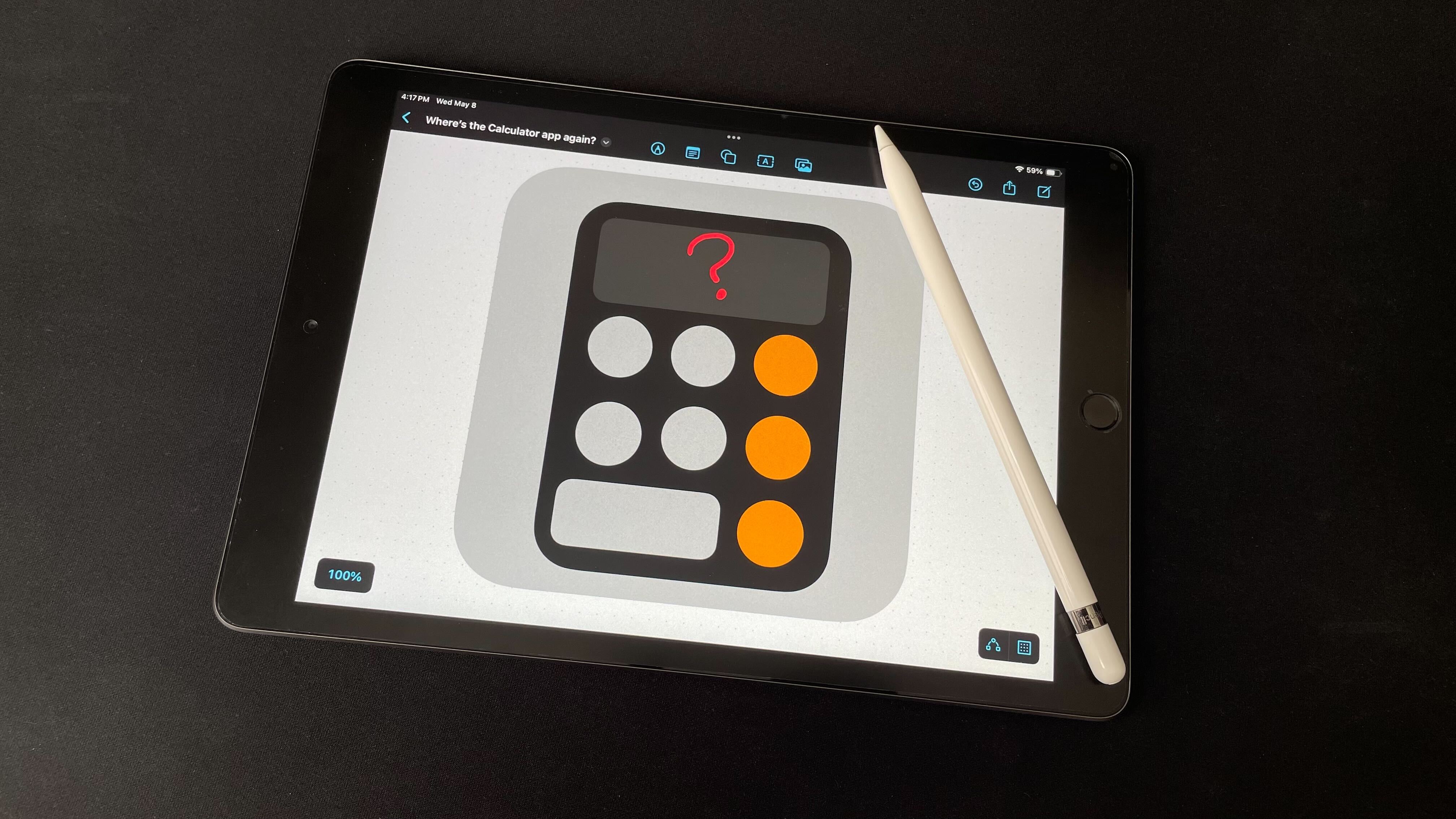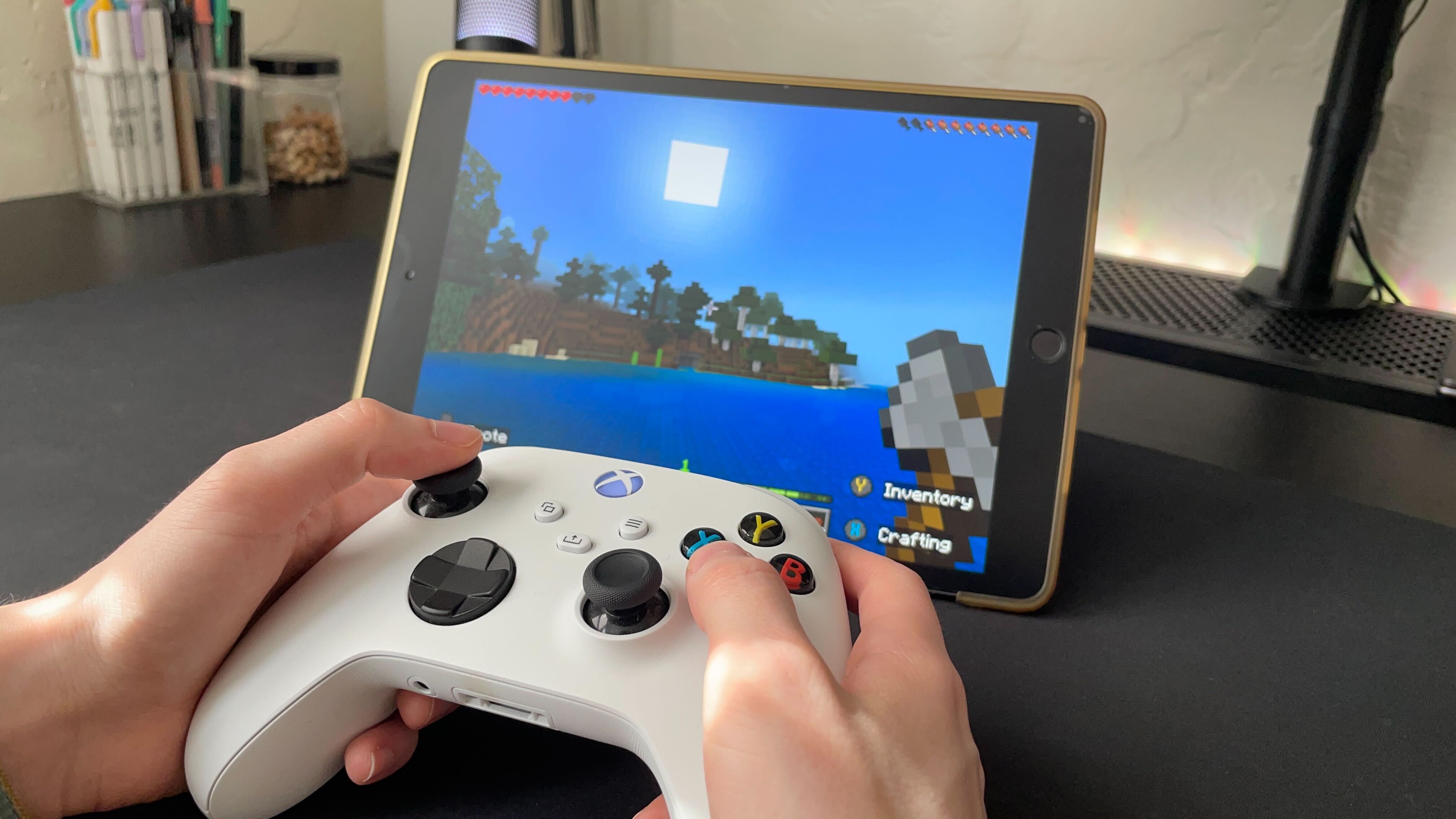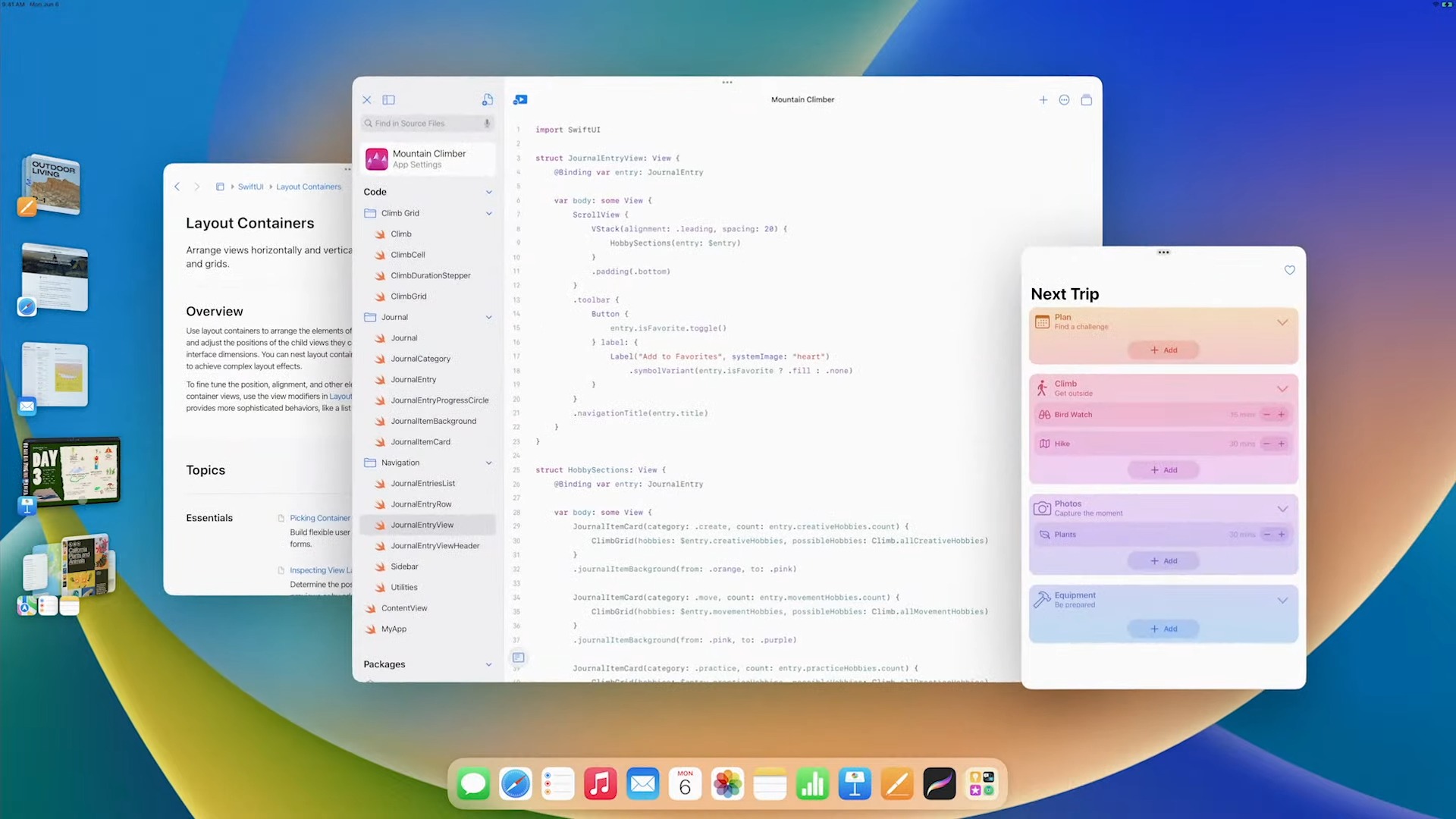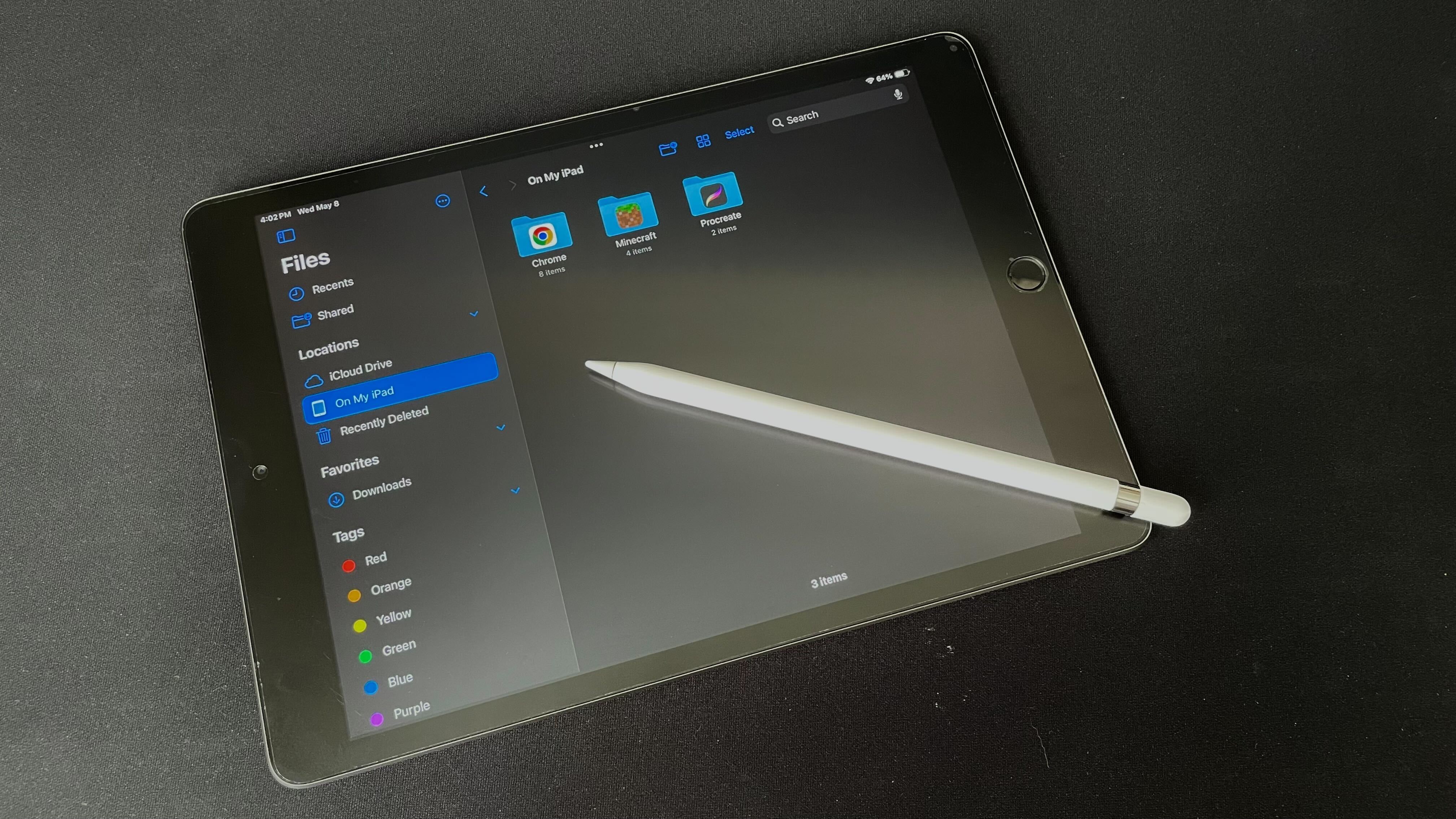iPadOS: 5 reasons people hate it
iPadOS has issues, but there's still hope Apple will fix it

This week, Apple announced the groundbreaking new iPad Pro M4, giving the iPad Air a serious spec bump with the M2 chip. As powerful as iPads have become, they still seem to lag behind the Macbook in popularity.
Apple has been claiming for years now that the iPad can replace your Mac or laptop, and the iPad Pro M4 is more than capable of doing that, but there's still one thing holding it back: iPadOS. People kind of hate it.
My thoughts on the new iPad Pro? Ridiculously impressive hardware with a frustratingly limited OS. #AppleEventMay 7, 2024
the new iPad Pro pic.twitter.com/Ygs9v9bYaeMay 8, 2024
If Apple let me install macOS on this thing it would be an instant purchase, even at the insane $1648 price tag pic.twitter.com/WB0EeQxW4OMay 7, 2024
the new Magic Keyboard for iPad Pro finally has a function row of keys. Now give the iPad Pro a better OS and it might be worth buying pic.twitter.com/SLYeDFtNmJMay 7, 2024
With the gap between iPad and Mac hardware narrower than ever, it's never been more evident that the biggest issue with the iPad is software.
Why can't Apple just put MacOS on the iPad and leave behind the clunky iPadOS? Unfortunately, that seems unlikely this far into the iPad's lifecycle.
Luckily, Apple is expected to announce a significant iPadOS update at its Worldwide Developer Conference in June. So, it's possible they could fix many of the issues with iPadOS and give the incredible iPad Pro M4 a real chance to be a laptop replacement.
iPad users, including myself, would love to see Apple resolve five crucial issues in iPadOS 18. The biggest one could be a deal-breaker.

5. No calculator app
It has become a running joke that the iPad doesn't have a built-in calculator app. People who have never used an iPad will probably be surprised to hear this incredibly powerful device still doesn't have a calculator baked into it in 2024. Even the Apple Watch has a calculator.
Sign up to receive The Snapshot, a free special dispatch from Laptop Mag, in your inbox.
This is a little issue, but it's an odd oversight on Apple's part. Sure, you can download any number of free third-party calculator apps, but considering how many other apps are pre-loaded on the iPad, it's baffling that the Calculator app is the one Apple left out.
Luckily, there are rumors that Apple might finally add the Calculator app to iPadOS 18. It would be impressive if the iPad version had graphing capabilities, but Apple will likely scale up the iOS Calculator app. Still, having an app that should have been there all along will be nice.

4. Limited to one audio source at a time
On a Mac or PC, you can have countless audio streams going at once, such as a podcast and a background ambiance video on YouTube. That's not possible on the iPad, though. iPadOS only allows audio from one input going at a time.
This is a small but frustrating issue, especially for gamers. The iPad can be a fun mobile gaming device, especially with more great games coming to the platform through cloud gaming services. The new iPad Pro M4 is even capable of ray tracing, which is incredible to see on a tablet!
However, many gamers, like myself, enjoy listening to music while gaming. You can't do that on the iPad. If I'm roaming around in Minecraft, it's just me and the ambient noise of the game. Even if I open Spotify first and start playing something, my iPad will pause the music when it opens the Minecraft app. This same thing happens with every app in iPadOS.
Sometimes, you can get around it by muting app audio so your music can keep playing, but that's not always feasible, like with games. This is also a perfect example of how the iPad still struggles to achieve true multi-tasking as the Mac can, which raises another big concern: Stage Manager.
3. Lack of freedom in Stage Manager

Apple's introduction of Stage Manager in iPadOS 16 was undoubtedly a step in the right direction. This feature finally allowed iPad users some freedom for multitasking. With Stage Manager, you can have multiple windows open at once and organize them around your screen, similar to how you would handle several open windows on a Mac or PC.
Unfortunately, there's still trouble in paradise. Stage Manager is helpful but stubborn. You can't move windows off-screen or even to the edge of your screen. There's a thin gap around the border of the display that minimizes how much freedom you have to place windows however you want.
Luckily, Apple fixed one frustrating issue with Stage Manager in iPadOS 17. Now, you can resize most app windows to a variety of sizes rather than a few preset sizes for landscape or portrait. However, you are still limited to only a handful of open windows before iPadOS starts trying to kick old windows off the screen when you open new ones.
Stage Manager certainly improved multitasking on the iPad, but it's still half-baked. With the powerful new iPad Pros and iPad Airs Apple just released, it can't keep writing off multitasking issues as hardware limitations. Hopefully, Stage Manager gets cleaned up in iPadOS 18.

2. Rigid, limited app availability
Apple finally brought Final Cut Pro to the iPad in May 2023, which was huge news. It's just one of many pro apps that users want to see on the iPad at a similar level to their MacOS counterparts. App availability is some of the clearest evidence that the issue with the iPad line-up isn't hardware; it's iPadOS.
You are highly restricted in what apps you can download on your iPad compared to a Mac or laptop since Apple only allows approved apps from the App Store. That also means you must use all your apps' latest versions. If you want to use an older version because it works better for you or uses less memory, there's no option to roll back or choose a different version.
Even the apps available on iPadOS and MacOS don't function on the same level. For example, Microsoft apps are crucial for many professionals, but the iPad versions of these apps are still awkward to navigate and less reliable than their Mac counterparts. iPad versions of pro apps also frequently have fewer features. Adobe Photoshop is a great example, as it has several tools found on the full Mac version (including, ironically, the pen tool).
So, while plenty of popular pro apps are technically available on the iPad, they cannot perform at the same level as their Mac counterparts. There are various reasons for this, including hardware limitations like RAM. However, iPadOS plays a significant role because it resembles iOS more than MacOS, often resulting in developers creating an iPad port of their slimmed-down iOS app.
Ironically, many developers may simply be overlooking their apps' iPad versions because they have more Mac users than iPad users. This is something of a Catch-22 since the lack of high-quality pro apps is a big reason power users don't switch to the iPad.

1. Poor file management
Arguably, the single biggest issue with iPadOS and one of the main barriers holding it back from being a laptop replacement is the poor file management system. The iPad has a file app that can do basic things like sync files with your iCloud account or open PDFs. However, things get much more complicated when you need to organize files or access an external drive like an SD card or external hard drive.
The Files app allows you to use the Apple Pencil to mark up PDFs, which is handy for taking notes or signing documents. However, it also has the bad habit of either not saving notes or freezing to save them, forcing you to stop and wait before you can keep writing.
The freezing doesn't stop there, either. iPad users often face long loading times and app crashes when organizing files in external drives plugged into their iPad. This is a big issue for pro users since external drives are crucial for storing large files like photos and videos, especially considering how little storage many iPads have. Freezing can be so bad in the current version of iPadOS (17.4.1) that sometimes it requires completely restarting your device to get back on track.
If Apple wants iPads to appeal to pro users and become laptop replacements, it must give the Files app a significant update. In its current state, it is so unreliable that graphic designers and video editors are unlikely to trust an iPad with their files over a Mac. Even if the Files app was the only big fix in iPadOS 18, it would still make many iPad users happy.
More from Laptop Mag
- Is the Apple Pencil Pro worth buying? A singular new feature could propel it to the mainstream
- The iPad Pro M4 has outgrown iPadOS, but is it ready for macOS?
- iPad Pro M4 vs. iPad Air 6: Which new iPad will be right for you?

Stevie Bonifield is a freelance tech journalist who has written for PC Gamer, Tom's Guide, and Laptop Mag on everything from gaming to smartwatches. Outside of writing, Stevie loves indie games, TTRPGs, and building way too many custom keyboards.
